The director of Fota Wildlife Park in Co Cork has said he expects the park to play a greater role in the conservation of native species in the future.
Today marks 40 years to the day since the wildlife park first opened at Fota.
As part of its anniversary celebrations, it is preparing to release more than 30 endangered curlew chicks into the wild at locations throughout the country over the next week.
When Fota first opened its gates, on 23 June 1983, one of its aims was to develop breeding programmes to halt the decline in a number of critically-endangered species native to Asia and Africa.
Since then, Fota has celebrated the birth of 240 cheetahs, 72 Rothschild's giraffes and 60 European bison.
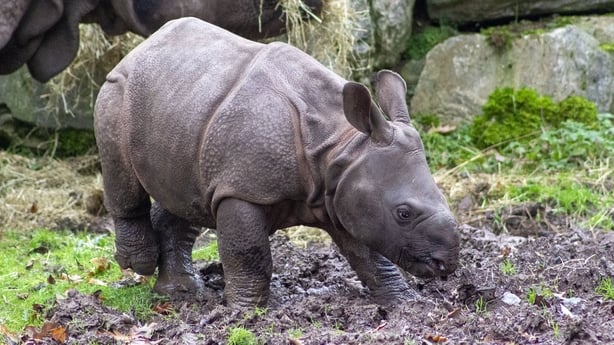
Last year, Fota announced a first for the park and a first for Ireland, with the birth of an Indian rhino calf after a gestation period of 16 months.
Today, Jai is nine months old and is thriving in the care of mother, Maya, under the watchful eye of father, Jamil, in the paddock next door.
Now, though, with more and more species here in Ireland categorised as vulnerable, endangered or critically endangered, Fota's attention is turning to home.
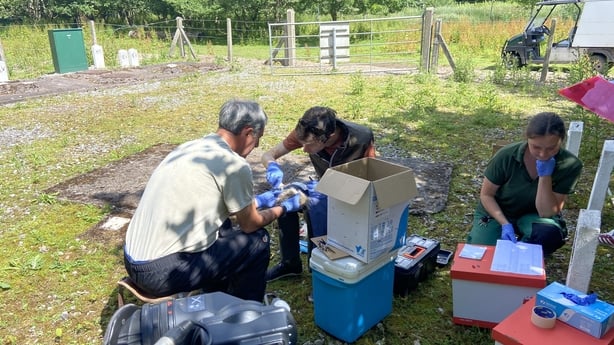
'Giving nature a dig-out'
In a quiet corner of Fota Wildlife Park, ecologist Seán Kelly from the National Parks and Wildlife Service and a team of park rangers are busy ringing curlew chicks for future identification and research.
All the chicks are just two to three weeks old.
Given the stark decline in the curlew population, with just over 100 breeding pairs dispersed over the country's wetlands and bogs, each one is absolutely precious.
At Fota, 34 curlew chicks were hatched from 40 eggs gathered from nests in those breeding grounds by the NPWS.
Fota is using the expertise it has built up in breeding endangered species from all over the world to give native species on the endangered list here a helping hand.
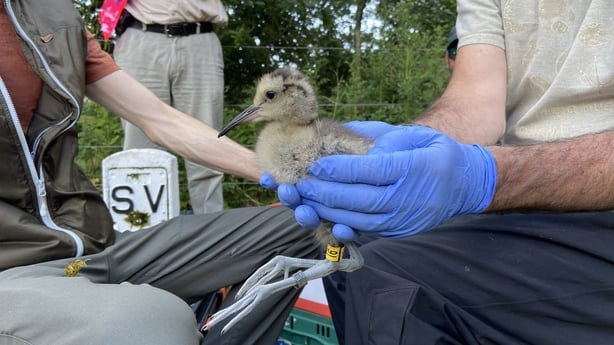
Mr Kelly describes the project as giving nature "a bit of a dig-out".
"What we are doing here is buying time," he says.
"This does not solve the underlying issues, and there are various reasons why the curlew isn't producing enough young on the ground.
"This is a really good thing for just buying this really threatened species some time, and during that time we really need to work hard to identify and address the issues at site level and at landscape level to secure this species for the future."
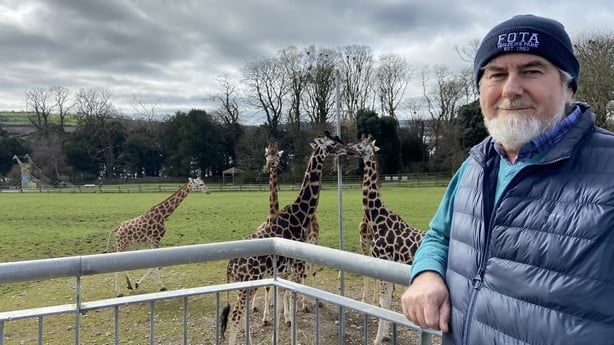
The project is being overseen by Fota Wildlife Director Sean McKeown - Fota is partnering with the NPWS in the curlew project, as part of the Curlew Conservation Programme.
"Forty years ago, when we opened, we weren't really thinking of ourselves as a large conservation facility," Mr McKeown told RTÉ News on a tour of the park.
"It was more about education and making people aware of animal species.
"Today we are very different. We have become much more of a conservation organisation.
"70% of all the animal species that are here are endangered or under threat of extinction in the wild.
"They are being supported by Fota Wildlife Park."
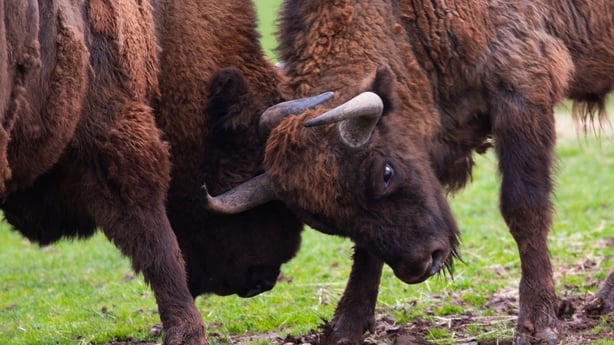
Reintroduction programmes
Fota Wildlife Park is playing a central role in a number of important reintroduction programmes, such as the reintroduction of the European bison to the UK, Poland and Romania and the Scimitar horned oryx to north Africa.
Native Irish species are now also being catered for, with the release of 7,500 natterjack toads in west Kerry, in partnership with the National Parks and Wildlife Service (NPWS) and Dingle Aquarium.
In addition, Fota financially supports and donates its breeding expertise to conservation projects at home and abroad.
To date, Fota has invested €4 million in conservation programmes.
Fota is a non-profit organisation. It relies on gate receipts, membership income and gift shop income to fund its daily operating costs and projects. It is also a registered conservation charity.
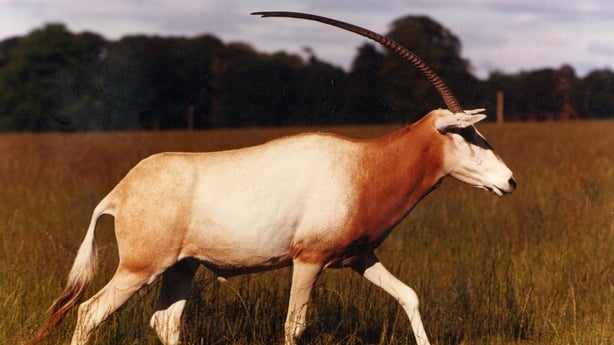
Allied to its growing role in conservation, the 100-acres Fota Wildlife Park continues to be one of the most popular tourist attractions in the country.
Between 400,000 and half a million visitors pass through its gates each year.
Fota also employs around 70 full-time staff, including rangers and conservation staff.
Many of them came for temporary summer jobs and never left.
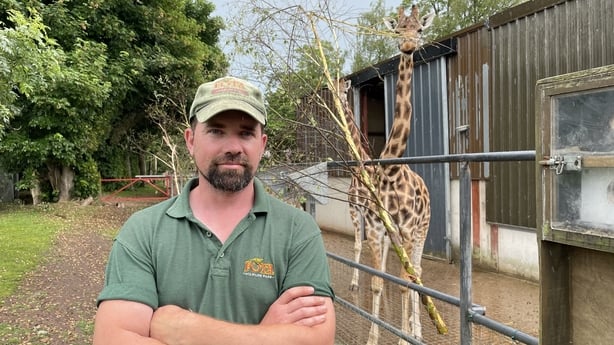
'Best job in the world'
Aidan Rafferty from Ballintemple in Cork is one of those.
When Mr Rafferty started at Fota he was picking litter and working on the gate, processing visitors and school tours through the park.
Almost 20 years later, Mr Rafferty is the Lead Ranger in the hoofstock section, with a particular interest in Fota's herd of Rothschild's giraffes.
"I have the best job in the world - for me anyway," Mr Rafferty declares.
"It's hard work and you are not going to become a millionaire on it, so you have to have a love of the job to do it.
"It's a privilege to work here and it's a privilege to work with these animals."
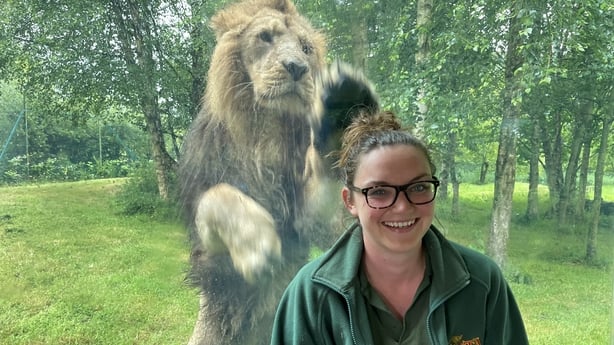
'Beautiful interactions'
Jess Hodnett is a ranger at Fota, where she has worked for 10 years.
Right now, she is looking after the big cats: the Asiatic lions in the carnivore section, in particular seven-year old Yali, a male, and twin sisters, Gita and Gira, who are nine.
"It's amazing - a wonderful experience," Ms Hodnett says.
"You wouldn't get it anywhere else. You can get such beautiful interactions with them."
Mr McKeown is now turning his attention to the next 40 years and the future, a time when the need for its breeding and conservation expertise is likely to be even greater.
"I am delighted to celebrate Fota at 40 and highlight the real and great successes we have here in terms of breeding endangered animals," he says.
"During the next 40 years we will expand on our collaborative native species projects already started, helping to save and reverse the decline of Ireland's emblematic species such as the corncrake, the curlew and the natterjack toad in conjunction with partners and stakeholders such as the National Parks and Wildlife Service, farmers and landowners, as it is only by all of us working together that we have a chance of saving the natural world around us."







